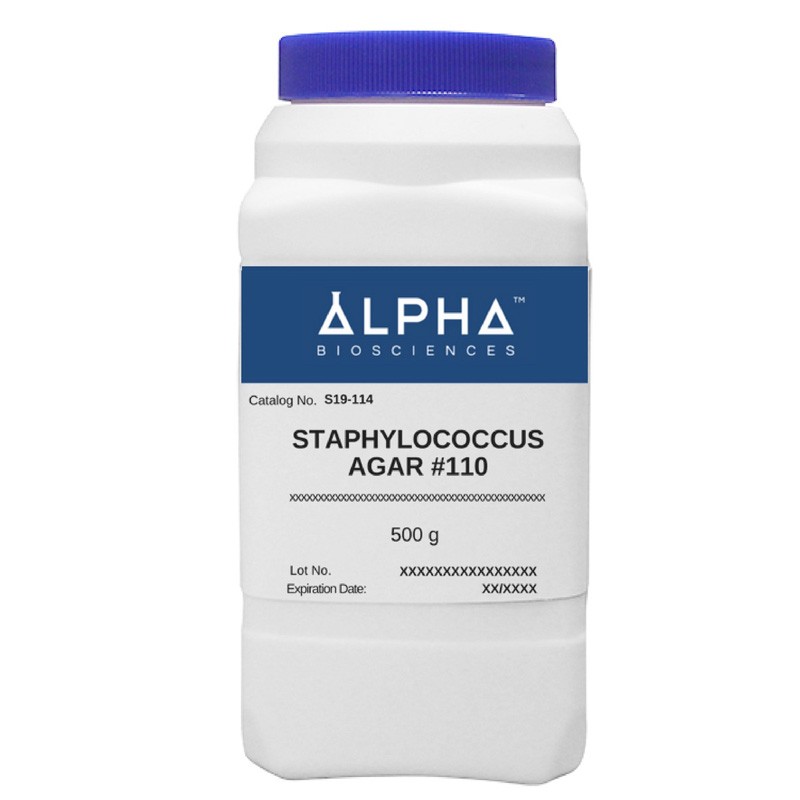- +Products
- +Allergen testing
- +Culture Media - reagents and reference material
- +Environmental testing solutions
- +Laboratory Consumables
- +Laboratory equipment
- +Microbiology equipment
- +Neogen® Food Safety Solutions
- +Temperature & Humidity Monitoring
- Services
- Support
- News
- +About Us
- Contact

Staphylococcus Agar n110
Staphylococcus Agar is a selective medium for the isolation and differentiation of pathogenic Staphylococci. Enzymatic Digest of Casein and Yeast Extract provide amino acids, proteins, carbohydrates, vitamins, and electrolytes.
D-Mannitol is the main carbohydrate source, while Lactose is the supplementary one. Dipotassium Phosphate acts as a pH buffer. Sodium Chloride provides electrolytes, maintains osmotic equilibrium, and makes the medium selective for Gram-positive bacteria.
Gelatin is included to test liquefaction. Pathogenic Staphylococci grow well on this medium and form golden yellow colonies. Mannitol fermentation is detected by adding a few drops of Bromothymol Blue and looking for a yellow halo on the areas where colonies have been removed.
Gelatin liquefaction can be observed as clear zones after flooding the plates with an aqueous solution of Ammonium Sulfate and incubating 10 min at 37 ºC. Agar is the gelifying agent.
In compliance with regulatory requirements, a USDA permit (VS 16-3) is mandatory for shipments from Canada to the USA due to the inclusion of peptone, an animal byproduct.
Staphylococcus Agar #110 is a selective medium used for the identification and isolation of pathogenic Staphylococci. The high salt concentration contributes to the selective isolation of pathogenic Staphylococci.
Pathogenic strains of staphylococci usually produce yellow to orange-pigmented colonies on this media. Orange-pigmented colonies are picked and inoculated into brain heart infusion or tryptose phosphate broth for the coagulase test. Mannitol fermentation is determined by a color change of bromocresol purple after placing a drop of the dye onto areas of the agar surface from which the colonies have been removed.
Gelatin hydrolysis is determined by flooding the plate with 5 mL of a saturated aqueous solution of ammonium sulfate and incubating plate at 35.0°C for 10 minutes. A clear zone around the colonies indicates gelatin hydrolysis.
Download



